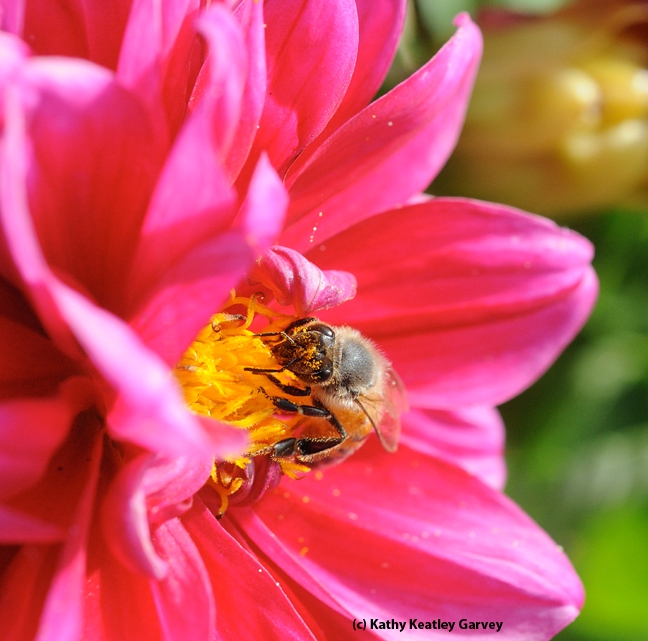One of the most prominent and distant--as in far away--visitors to the Häagen-Dazs Honey Bee Haven, the half-acre bee friendly garden on Bee Biology Road, UC Davis, was Mark Leech of Launceston, Tasmania, Australia.
Leech visited the garden several years ago to research his book, Bee Friendly: A Planting Guide for European Honeybees and Australia Native Pollinators for the Australian Rural Industries R&D Corp (RIRDC).
"The book," he told us, "is to encourage planting for bee forage across the landscape from urban to the rural environment and all climate zones."
Leech recently provided us with a copy of the finished work, which is absolutely magnificent. It's informative, educational and colorful and is bound to make a difference.
On Page 1, he writes: "The world has become aware of the plight of the honeybee. The reported collapse of honeybee population in North America and Europe, and the fear of a food crisis, have led people around the world to become concerned. Shrinking resources, increased urbanization, ever expanding corporate agriculture with its push for monoculture, greater use of insecticides and herbicides, changes to grazing practices, a global warning trend and climatic chare are all placing pressure on honeybee and native pollinator population. It is in this context that this book was produced, to guide planting decisions in favour of plants theat benefit honeybees and native pollinatiors."
He devotes one page to the Häagen-Dazs Honey Bee Haven, which was planted in the fall of 2009 and is operated by the UC Davis Department of Entomology and Nematology. "In response to colony collapse and threats to the US apiary industry, Häagen-Dazs, a well-known ice cream brand, launched the Häagen-Dazs Loves HoneyBees' campaign in February 2008, committing significant funding to both the University of California, Davis and Pennsylvania State University for honeybee research. Its contribution to UC Davis resulted in a bee garden as a demonstration, education and research tool."
"The purpose of the Honeybee Haven garden is to provide a year-round food source for honeybees," Leech continued. "One of the design criteria in the competition that was held was that the Honeybee Haven should inspire the development of honeybee garens in a variety of settings, including backyards, public gardens, agricultural easements, urban rooftoops and other urban species."
For the front and back covers of the book, Leech chose an mage of a bee foraging on a pink zinnia (a photo taken by yours truly in the Häagen-Dazs Honey Bee Haven).
His species pages contain 193 species, native and exotic, "that were chosen to represent a selection of useful bee forage. Many of the plants are known as top producers of both pollen and nectar, a few are nectar only, and some are pollen only."
Among those contributing to the book from the United States: Extension apiculturist Eric Mussen of the UC Davis Department of Entomology and Nematology; Kim Flottum, editor of Bee Culture; bee scientist Marla Spivak of the University of Minnesota; and Kathy Kellison, executive director of Partners for Sustainable Pollination.
It's a book well worth reading. You can download a free PDF of the book from the Rural Industries Research and Development Corporation website at http://www.rirdc.gov.au/. Go to publications and look under honeybees. You can also order a bound copy through Mark Leech at mleech@iinet.net.au.
Attached Images:
